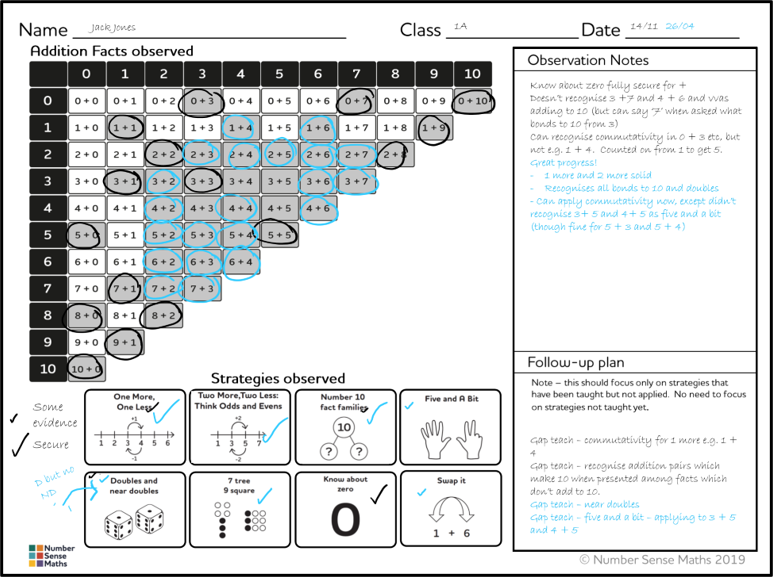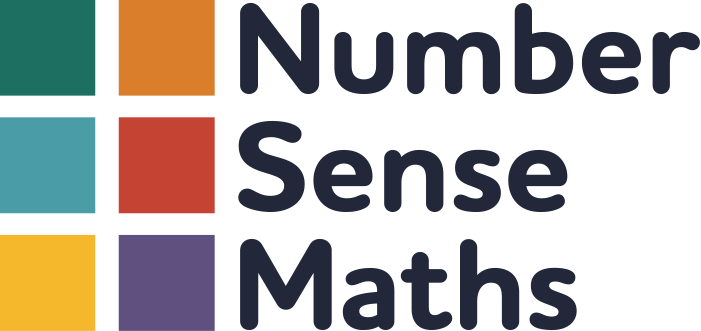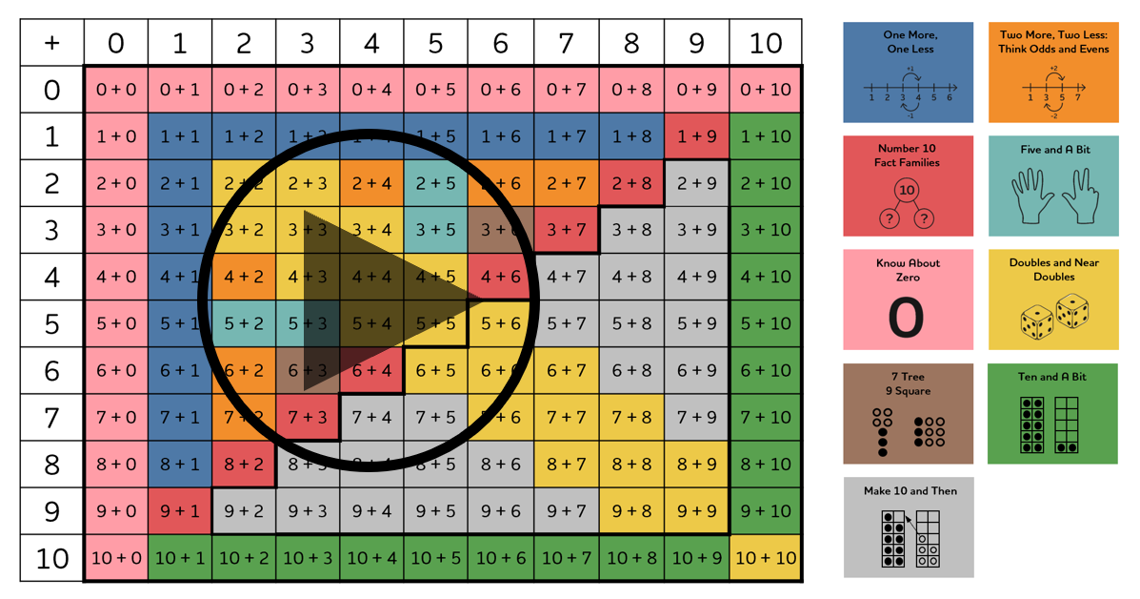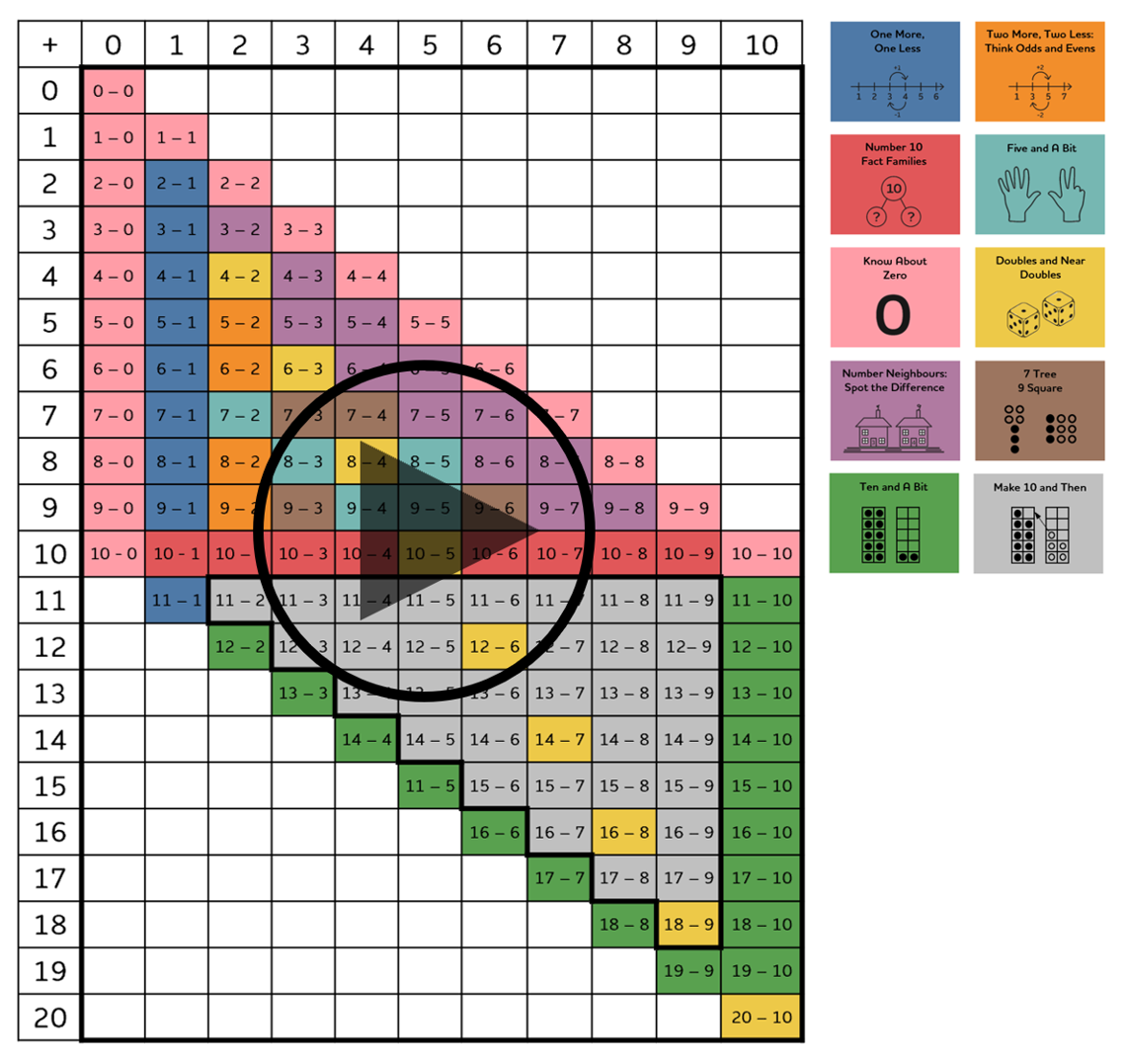Why number fact teaching should be thought of as phonics for maths
The Number Facts Fluency Programme is a scheme of work focused entirely on number fact teaching, providing the structure and depth to number fact teaching that children need to achieve fluency. We’ve found the easiest way to help people understand the programme is to describe it as ‘phonics for maths’. Here’s what we mean.
1. It's systematic and structured
One of the things that has always amazed us is that we plan in schools for when every grapheme-phoneme-correspondence is taught but don’t take the same approach to basic units of number. For example schools could tell you in what term, and often in what week, they teach the long vowel sound /ō/ as ow, oa and o_e. But when we ask ourselves where we teach children that 4 + 3 = 7, well most of us just can’t answer that with anything more specific than "all the way through year 1 and 2 really". Too many children are simply taught to “put the bigger number in your head and count on” as the only approach to calculating. Meanwhile, a minority of children have worked out how to use calculation strategies that simplify the calculations they face, solving 5 + 6 as one more than double 5, instead of counting on for example.
The more we’ve thought about it the more that feels crazy: calculation is even more regular than reading, so if it makes sense to pay attention to each small unit in early reading, then let’s take the same approach to early calculation. In NSM Number Facts every single addition and subtraction fact is mapped to one or more calculation strategies that are taught through the programme. These videos show how the strategies collectively build number fact fluency. Nothing is left to chance.
2. It isn’t the full maths curriculum
Just as phonics doesn’t form the full reading curriculum in early reading, the same is the case with number fact teaching and maths. We’ve blogged here on how the number curriculum in Year 1 can be integrated into daily routines. We would argue that lesson time freed up from teaching other number objectives should then be redirected to number fact teaching. We’ve also got a blog coming up on how the concept of halving can be introduced practically through measures and shape work before jumping into halving as ‘being a number thing’ and how a rich shape and measures curriculum has to sit alongside structured number fact teaching.
3. Little and often works well
Just as phonics is taught in short daily sessions, number fact teaching works well with this approach too, with sessions including review, teaching, practice and application. Some of the schools that have used NSM Number Facts from the start have built lots of our programme and resources into the main daily maths lesson. However, for schools that want to supplement rather than adapt the schemes of work they currently follow, the programme materials provide everything schools need to introduce a daily 15 - 20 minutes number fact session in addition to a main maths lesson.
4. Assessment is integral and essential
Schools assess children's developing phonic knowledge through the phonics screening check, and supplementary pupil conferencing in school. In our view children's developing number fact fluency should also be tracked at an individual pupil level through one to one conferencing, just as phonics is, and indeed times tables are too. Schools that have started to do this for number facts have found it eye opening. Does each child know that they can solve 1 + 5 by thinking "one more than 5" or are some children counting on 5 from 1? Do they know that 7 - 5 must be 2 because 7 and 5 are next door odd numbers? Which children are still counting back 5 from 7 to solve this? The principle of teaching, assessing and then reteaching as required runs through effective number fact teaching. NSM Number Facts provides assessment packs with everything you need. Along with grapheme-phoneme-correspondences and times tables, number facts are the third set of 'small unit' basics which we need to make sure children are fluent in.

5. It enables home-school communication
The typical experience of families with a child in key stage 1 is that schools communicate really clearly how reading is taught, and how they can help at home. There might be leaflets sent home to help parents know what graphemes are being taught and how they should say the phonemes they correspond to, meetings in school talking through the phonics programme a school uses, or communication through reading records about their child’s progress in reading and movement through reading levels. Home-school communication in maths is often unstructured in comparison, with schools often lacking a framework to go beyond providing generic advice to encourage counting and cooking for example.
A structured approach to number fact teaching allow all the good practice in phonics home-school communication to happen in maths. Each teaching step of the NSM number facts has a ‘Games and Activities for Home’ sheet to send home, designed to help families understand what their child is learning at school in maths and how they can support at home. All the pupil exercises have talking tips which help any adult to see the focus of the exercise and provide the language they can use to guide learning.

"Helpful for all, harmful for none and crucial for some"
One of the quotes about phonics that really resonates with us is that ‘…attention to small units in early reading instruction is helpful for all children, harmful for none, and crucial for some’ (Snow & Juel, 2005, pp. 501–520). We have the same hypothesis about attention to small units in early maths instruction. All children will benefit from being taught about number and number relationships in a carefully structured way, and for some children it is crucial – without it they will simply have no firm foundation to build the next 10 or so years of school maths lessons and are set up to fail. See our blog here on how even Year 2 maths is much simpler for children who have fluent number facts. Having children moving through school – both primary and secondary schools – whose only calculation strategy is counting in ones is something that we just shouldn’t accept, and the change needs to start from when we first teach children to calculate. We’ve developed NSM Number Facts to help make sure that lack of confidence with number facts and relationships never needs to be a barrier to mathematical attainment and a lifelong enjoyment of numbers.
Snow, C. E., & Juel, C. (2005). Teaching Children to Read: What Do We Know about How to Do It? In M. J. Snowling & C. Hulme (Eds.), Blackwell handbooks of developmental psychology. The science of reading: A handbook (p. 501–520). Blackwell Publishing.


